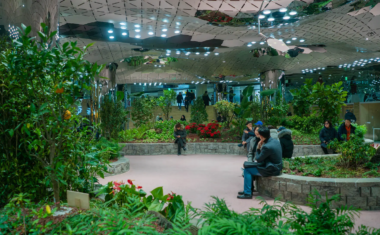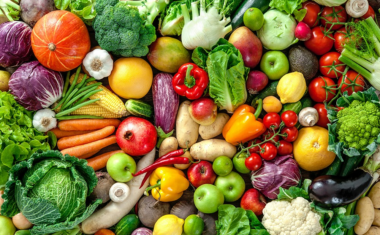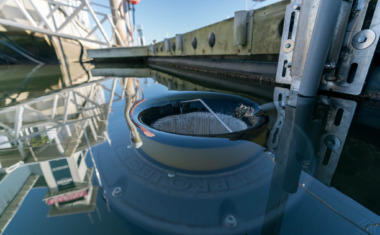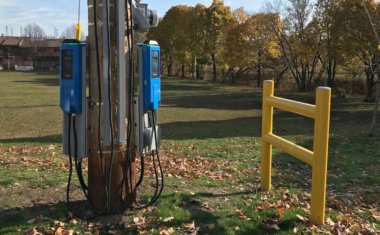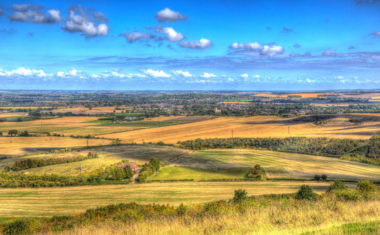Rain City Strategy
- 5
- 13 min to read
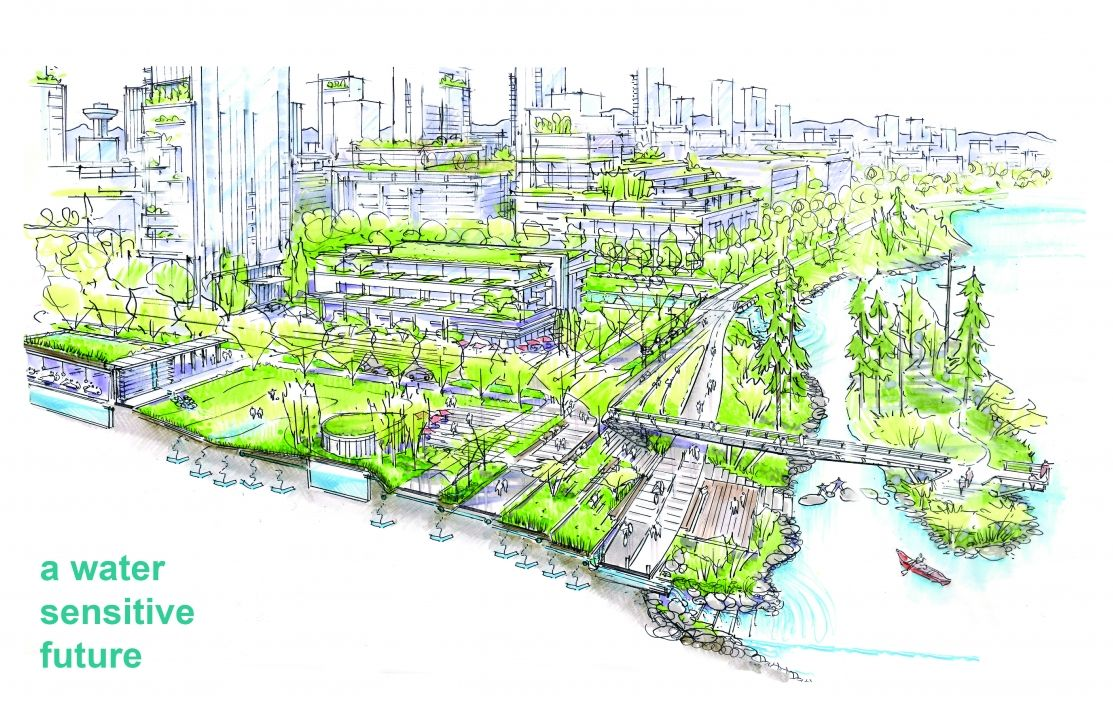
Vancouver, Canada
About the city. As Vancouver’s population increases, they are developing balanced plans and services to manage and conserve drinking water, rainwater, wastewater, and groundwater in development sites and at a neighbourhood scale.
Goal
There are three main goals:
- Improve and protect Vancouver’s water quality;
- Increase Vancouver’s resilience through sustainable water management;
- Enhance Vancouver’s livability by improving natural and urban ecosystems.
Also, the goal is to build a deep understanding of the flow and quality of water in our underground pipe network, above and below ground, and into our streams, rivers and ocean. This data and analysis help plan for future infrastructure to serve our communities better, withstand shocks and stressors and adapt to a changing climate.
Implementation period. On November 5, 2019, City Council unanimously approved an ambitious green rainwater infrastructure and urban rainwater management initiative called the Rain City Strategy.
Fact
The water resources found in urban areas, such as Vancouver, include groundwater, surface water, drinking water, rainwater and wastewater. These water resources are interrelated and all contribute to or were derived from some part of the natural water cycle.
Solutions
https://www.youtube.com/watch?v=3BqQ_KvMeGM
The Rain City Strategy is a high-level strategic plan, which could lead to changes in policy or regulations around the management of rainwater on private and public property, to improve water quality, increase resilience, and enhance the livability of our natural and urban ecosystems. Throughout the process of developing the Rain City Strategy, the City of Vancouver invited residents, businesses, and industry professionals to participate and provide insights through a variety of engagement opportunities, including open houses, workshops, surveys, educational events, and expert panel meetings.
Urban rainwater run-off picks up many pollutants from rooftops and roadways and contaminates our aquatic environment. Climate change has also caused extreme rain events to become increasingly common, which could lead to major urban flooding and damage throughout the city.
Nature-based and distributed solutions to rainwater management, such as green rainwater infrastructure, can capture and clean rainwater to reduce flooding and prevent harmful substances from entering our waterways.
Vancouver is famous for its rain, which has become an intrinsic part of the city’s culture and identity. Rain is deeply embedded in many of our daily experiences. On average, it rains over 160 days and between 1200 – 1600 millimetres a year.4 Around 70% of our rainfall volume arrives as light showers (less than 24 mm per day), and another 20% as rainstorms (between 24-48 mm per day). The last 10% of our annual rainfall volume arrives as extreme rainstorms (greater than 48 mm per day). These large rainstorms are predicted to increase in intensity and frequency due to climate change.5 Not only are we expecting more extreme events, but we are also expecting an increase in the volume of rainfall received annually, especially in fall and winter. In the summer, we have a different situation. Our summers are warm and dry, and are predicted to become even more so as the climate changes.
Urban rainwater runoff is a major cause of water pollution in urban areas.7 8 When rain falls on our roofs, streets, parking lots and other hard surfaces, the rainwater flowing over these surfaces – also known as urban rainwater runoff – picks up pollutants and the untreated rainwater is conveyed through our pipes, either to the treatment plant or directly into our local waterbodies. Common pollutants found in urban rainwater runoff include:
- Litter (e.g. cigarette butts);
- Bacteria (e.g. E. coli from animal waste);
- Heavy metals (e.g. copper released from brake pads and zinc and other metals from tire wear and rooftops);
- Chemical compounds in tire dust;
- Hydrocarbons (e.g. oils and gasoline);
- Nutrients (e.g. fertilizers and animal waste);
- Micro-plastics (e.g. vehicle and building material wear), and
- Sediment (e.g. dust and other particles and soil disturbance from construction activity).
In this development, water is being managed and conserved to help relieve reliance on our piped system, and reduce the impacts of climate change. Rainwater is collected and reused for irrigation and toilet flushing.
What is grey infrastructure?
In the context of rainwater management, grey infrastructure refers to purely engineered rainwater management practices, such as pipes, detention tanks, water quality devices, treatment plants and pump stations. Grey infrastructure is the rainwater management method that has traditionally been used by the City, and is primarily focused on protecting public health by collecting urban rainwater runoff and wastewater, and conveying it to the treatment plant or receiving water bodies as quickly as possible.
Over time, additional grey infrastructure tools have been developed that complement and support GRI, primarily through the storage of rainwater. They can be built on their own, or combined with GRI tools that provide green space on the surface. These storage tools include detention systems, and ways to store water on the surface, such as water squares and other floodable spaces, and when deployed together with GRI they can be particularly effective.
An example of this integrated approach is the water square at the Benthemplein in Rotterdam that captures, stores and cleans rainwater. Some water is infiltrated through GRI while some is pumped back into the combined sewer system once capacity in the system is available.
Vancouver’s wastewater is predominantly treated at Metro Vancouver’s Iona Wastewater Treatment Plant on the shores of the Fraser River. A small portion of Vancouver’s wastewater from the southeast catchments is directed to Metro Vancouver’s Annacis Island Wastewater Treatment Plant. The Iona facility currently provides primary treatment levels, which mostly removes material that will either float or readily settle out by gravity. Plans are underway to upgrade the Iona facility by 2030 to secondary treatment levels, which typically also include biological processes to more effectively remove organic matter from the wastewater. The design of our combined sewer system also includes overflows (also called outfalls), so that when the system is over capacity, rather than flooding the treatment plant or homes and businesses, the combined sewage (sanitary sewage diluted with rainwater) flows into the receiving water bodies around the city. These overflow events are called combined sewer overflows (CSOs).
This image shows some of the common green infrastructure practices that can be applied to neighbourhoods and the benefits they provide. Practices include rain gardens, bioswales, rainwater harvesting, tree trenches, and permeable pavers.
Rainwater management (also referred to by some as stormwater management) focuses on how we manage urban rainwater runoff in the environment through a combination of land use, surface and sub-surface GRI and traditional pipe and other grey infrastructure solutions. It is one part of the larger umbrella term of integrated water management, which can also include sewer and drinking water systems, and the services provided by natural areas such as forested parks, tidal flats, vegetated buffers and floodplain areas.
Team
The Rain City Strategy is a cross-departmental initiative led by Engineering Services. The strategy builds on the initial work of the citywide Integrated Rainwater Management Plan (IRMP) and provides a strategic roadmap to 2050 with action plans for green rainwater infrastructure (GRI) implementation that will enable our city to actively value rainwater as a resource.
Timeline
Initial start-up funding for several programs within the action plans will be allocated through the existing 2019-2022 Capital Plan and operating budgets. Funding will support resources to scope, evaluate and develop programs in the short term. Beyond 2022, funding will be assessed based on each program with the development of sustainable funding models and financial planning for a long term implementation.
If you notice an error or inaccuracy in our editorials, please email [email protected] so we can look into it.

